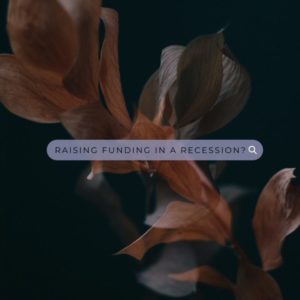Saying it’s been a tough year, is one of the biggest understatements.
What’s been tough is the need to track constant change.
Those who have tracked it well have been better able to notice changing consumer needs and desires.
They have been the brand winners and businesses best able to adapt.
Those that neglect to adapt to the changes in consumer needs and desires are the brands that are losing out right now.
It does bring us to the age old question what’s the difference between business and brand strategy.
While business strategy remains firmly fixed on making money, brand strategy starts with building the brand to then help grow the business.
By focusing on business strategy over brand strategy, brands can miss an opportunity to use their brand strength to grow.
A recent article I read sums it up perfectly:
‘Once a marketing and communications vehicle, in recent years brand strategy has expanded to become a driver for growth. More legacy brands are focusing on brand strategy as they look to adjust, survive and thrive in this tough market. And for many organizations, brand strategy is ascendent over business strategy’
A brand can give businesses the strong north star they need to help guide their way instead of settling to follow the market norms and competition.
So often I have been dragged into the age-old debate of which of the two takes priority – business or brand – finding myself forever proving the value of brand strategy, especially for legacy brands.
For years when growing my first brand design consultancy business in Turkey I was having to demonstrate the importance of brand on growth and longevity of the business.
Leaning on examples to prove my point. Nike for example with the ‘Just Do It’ tagline is a great one. Whilst it began as a campaign, it is now its core brand strategy. It has now been a key component of its innovation strategy into new categories and segments. When a brand is at the core of business (and not seen as a campaign device) and has the EMOTIONAL expansiveness it needs it is able to bring direction to a business that is truly disruptive. This brings innovation, going beyond the status quo.
Why is this so important? Because the alternative is to be in a position where you are constantly striving for growth by trying to acquire market share. Let’s face it, with where the world is at, the word saturation shouts out. There is only so much share you can steal. The way to growth is diversification, going into adjacent, new, categories – even going as far as creating new categories. In Nike’s case it was collaborations, tech, so much so that you can call it a sports tech company. Nike is pushing the boundaries to be seen as much more than sneaker, rather a vehicle for a healthier, more accessible, and more prosperous lifestyle.
Over the course of time as we built the consultancy the need to prove the value of brand diminished as our client’s business growth proved our case in point. One in particular was Atelier Rebul. A legacy cologne brand that was struggling to steal share in a mass market beauty and care market. We grew the brand through diversification and pushing the boundaries on what the purpose was. Through meticulous understanding of changing consumer behaviour needs and desires we built an emotional purpose that allowed it to be seen as a national heritage brand that offered an accessible yet luxurious joyful lifestyle for all. If the brand had not seen this opportunity, it would have eroded and not become 30 store global retail brand it is today.
So as we hurtle towards 2023, 12 years on from doing the rounds of board rooms explaining the difference between a brand and communication strategy – it shocks me that brand strategy is still underestimated.
So what’s my top bits of advice?
- Brand Strategy is far more than a set of assets that inform your packaging, brand identity, messaging and experience. It is a springboard for growth and identifying where the opportunities for the future of your business lies. You can use it to research, analyse, measure and evaluate your risks and opportunities. In a nutshell you can discover the ideas that are stick, the ideas that get you to diversify and safeguard your growth.
- Drop the functional brand purpose for the emotional purpose. Whether you call it purpose, mission, vision – just think of it as a north star for your business. Think of what your ‘Just cause’ is like Simon Sinek says in his book the Infinity game. What is your ‘why’ and how will it unlock opportunities for everyone. It’s a vision of a future state that does not exist yet. Yes, that’s how future gazing your emotional brand purpose gets to be. Brands with longevity will have a Just Cause and he defines it as:
-
- For Something – affirmative and optimistic
- Inclusive – open to all those who would like to contribute
- Service orientated – for the primary benefit of others
- Resilient – able to endure political, technological and cultural change
- Idealistic – Big, Bold and ultimately achievable.
Adhere to this framework and you will be in the infinite game, not the one chasing competition for market share you probably can’t easily acquire.
- Finally, give your brand strategy team, basically whoever is custodian of your brand a seat at the board. Still too often the strategy team is separated from the brand and marketing team, each operating in their own silo and the CMO to far removed from the rest of board. Recent reports show that only 5% of Fortune 1000 companieshave CMOs attend board meetings. According to Deloitte, only about 26% of CMOs regularly attend their companies’ board meetings. The role of a CMO is no longer just marketing and communications, as brand goes way beyond this remit – it is central to the direction of the brand so they must work closer with the strategy team (if not actually be the same team!) to ensure an aligned vision for the brand across all aspects of the business.
Titles are tiles but I believe the recently evolving title of Brand Strategy Director to the title ‘Chief Growth Officer’ will allow the reappraisal of ‘strategy’ needed by the board. Use of this title is being more closely linked to impact on growth, giving strategy the true voice and accountability it deserves and should take on. Most importantly the traction ‘strategy’ needs to keep businesses in the infinite game and have a chance of survival in the long term.
That’s all for now, and more to follow on how brand builds business. Reach out if you have any questions in the meantime!





